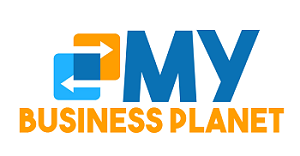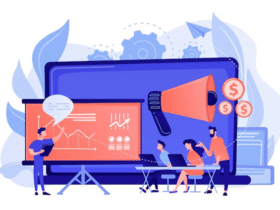It is crucial for organizations to strengthen their capacities via strategic human resource management in the modern business environment. The attainment of better business results is contingent upon the integration of HR staffing solutions, which include talent acquisition, succession planning, and workforce analytics. This article clarifies the complex strategy for improving organizational capacity by exploring these essential elements, therefore offering a thorough road map for organizations hoping to prosper in a more competitive environment.
Planning for Successions to Maintain Leadership Excellence
One essential component of staffing solutions, succession planning guarantees institutional knowledge retention and leadership continuity. In order to fill important responsibilities as they become available, this strategic process include identifying and nurturing future leaders inside the business. A well-thought-out succession plan guarantees the ongoing implementation of organizational plans and reduces the risks related to leadership vacancies.
Finding the important positions inside the company is the first stage in succession planning. These positions, which are often crucial to the strategic and operational success of the company, call for people with particular leadership abilities. Following the identification of these positions, a thorough evaluation of the skills and potential of the present workforce is conducted.
Next, development programmes are intended to prepare high-potential staff members for future leadership positions. To improve the abilities and experience of the staff members, these efforts might include leadership development courses, rotating assignments, and mentorship programmes. Furthermore, giving these people chances to experience across functional lines helps them to learn more about the company and gets them ready for more strategic and difficult responsibilities.
To guarantee succession plans remain relevant and successful, regular reviews and modifications are necessary. This fluid approach guarantees that the business is flexible and ready for any situation, requiring senior leadership and HR to work together.
Using Analytics from the Workforce to Make Strategic Decisions
A key element of HR staffing solutions, workforce analytics provides organizations with data-driven insights that guide strategic decision-making. Organizations may improve their knowledge of worker dynamics and provide guidance for strategic objectives by studying large volumes of employee-related data and identifying patterns and trends. Workforce analytics adoption involves many aspects, such as employee performance, engagement, and retention.
Analyzing an employee’s contribution to the objectives of the company is part of employee performance analytics. Through the assessment of metrics and key performance indicators (KPIs), companies are able to identify high-achieving people and teams in addition to areas that need development. Targeted interventions, like training and development programmes, that seek to improve overall performance are made easier by this data-driven approach.
Conversely, engagement analytics provide perceptions into the degree of dedication and contentment among staff members. Organizations are able to assess the success of their employee engagement strategy and determine the elements affecting employee morale via the analysis of engagement surveys, feedback forms, and other data sources. Targeted efforts that address these factors—like flexible work schedules and health programs—can greatly improve employee retention and engagement.
Another crucial component of retention analytics is the examination of turnover data to find trends and indicators of employee attrition. Organizations may reduce turnover by implementing tactics including competitive salary packages, career development opportunities, and a healthy work environment by understanding the causes behind employee departures. Predictive analytics may also be used to spot departing staff, which makes proactive retention strategies possible.
Using Integrated HR Strategies to Maximize Organizational Capability
Maximizing organizational capacity is achieved via the synergistic impact of integrating workforce analytics, succession planning, and talent acquisition into HR staffing solutions. Through the development of future leaders and the attraction and retention of top personnel, the organization is able to maintain its strategic agility and operational excellence throughout time. This is made possible by the holistic approach.
Keeping HR initiatives in line with the organization’s overarching strategic goals is a crucial component of this integration. This calls for in-depth knowledge of the objectives, and difficulties, facing the organization as well as the forces at play in the outside market. Organizations may guarantee that their human capital strategies propel and bolster their wider strategic agenda by coordinating their HR activities with these elements.
Retaining organizational competence also requires cultivating a culture of innovation and ongoing development. Embracing change, trying out novel concepts, and consistently improving one’s abilities and expertise are all part of this. Even more organizational agility and resilience may be achieved by establishing venues for knowledge exchange and collaboration, such innovation laboratories and cross-functional teams.
It is impossible to exaggerate how important leadership has been in promoting this unity. Driving strategic initiatives and cultivating an excellence culture are crucial tasks for effective executives who exemplify the organization’s values and goals. The performance and capabilities of the company may be greatly increased by leaders by actively participating in talent management procedures, offering mentoring, and promoting a continuous improvement culture.
Fostering An Innovative And Ever-Improving Culture
For organizations to truly reap the rewards of HR staffing solutions, innovation and continual improvement must be ingrained throughout the whole company. This entails creating an atmosphere where workers are motivated to absorb new information, develop professionally, and participate in the continuous improvement of HR initiatives and plans.
Employee participation in HR procedures and feedback may provide insightful information that helps guide ongoing efforts to improve. Further enhancing staff engagement and retention and bolstering organizational performance is the provision of opportunity for professional development and career progression.
To guarantee that HR strategies stay applicable and successful in a company environment that is changing quickly, innovation is also vital. Organizations may adapt their HR procedures on a constant basis to better serve their workforce and satisfy market expectations by keeping up with new developments and technological advancements in the HR space.
Conclusion:
Finally, it should be noted that improving organizational competence and obtaining better business results depend critically on the strategic integration of workforce analytics, succession planning, and talent acquisition inside HR staffing solutions. Organizations may maximize their human resources and sustain a competitive advantage in a constantly changing business environment by implementing a comprehensive strategy that harmonizes HR policies with organizational goals, cultivates a continuous improvement culture, and harnesses data-driven insights.
The importance of staffing solutions in fostering strategic success will only increase as businesses continue to negotiate the complexity of the contemporary corporate environment. Organizations may attain their present goals and set themselves up for long-term success by adopting these techniques and consistently improving their HR procedures.











